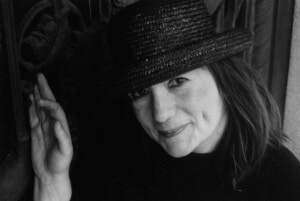 Thanks to Winner Circle author Jeannette de Beauvoir for this guest post! (Graphic courtesy FreeDigitalPhotos.net)
Thanks to Winner Circle author Jeannette de Beauvoir for this guest post! (Graphic courtesy FreeDigitalPhotos.net)
The famous terror of the blank page (or computer screen!) doesn’t need to overcome your creativity. Here are some tips for getting started that will awaken your muse… and put the pen in her hand!
Your first mistake is starting with the blank page/screen. Any project takes planning, and writing a novel is no exception. So accept that you have to do some reasonably heavy lifting before you even get to the pivotal scene that’s been playing in your head.
- That said, start by choosing your tools. Don’t worry: pen and paper are completely acceptable. However, if you’d like to make your life a little easier, I can wholeheartedly recommend using Scrivener.
- Okay, now that you have your tools lined up, use them. One of the reasons I recommend Scrivener is that it gives you access to spaces where you can jot down your ideas (I use the corkboard feature for this). If you don’t already have ideas for your novel, then perhaps you should wait until some come to you; otherwise, this is the time for random thoughts about it. They could be anything from the color of the protagonist’s eyes to the final exciting scene to that one point that you think someone should make.
- Next, create a character file. Create a file card (either real or virtual) for each character, and spend time with them. What’s the character’s backstory? What did he want to be when he grew up? What was Mom like? Where did your character go to school, and what was that like for her? What are his favorite foods? What’s her defining quotation? The list is only limited by your imagination. Why are you doing this? Because while people are often inconsistent in their thoughts and behavior, it’s up to you as their creator to make sure that these inconsistencies are neither sloppy nor haphazard. You need to know your characters inside out. Even if you don’t use a lot of this information, you need to have it.
- The next most important thing to consider is your timeline. I cannot count the instances of timeline mistakes I’ve made (thank goodness for editors!), because, quite simply, we forget. Was Elizabeth born in July or September? Is she older or younger than her brother Joe? Did the life-changing accident happen when she was twenty or twenty-five? All these and more are waiting to trip you up, so make it easy on yourself and note it all down.
- Let’s talk geography. It can trip you up, too. Use maps! They’re wonderful, and you can make them into pdfs and insert them into Scrivener for later perusal.
- Finally, have an idea of the plot. Just a vague idea really is fine… you may find, as I do, that your characters take a strong hand in changing it. That’s fine. But have an idea where you’re setting out for before you set out, and it will raise your confidence level substantially!
So there you go. Follow these steps and you’ll find that the blank page isn’t quite so terrifying!
 Jeannette de Beauvoir is an award-winning novelist, poet, and playwright, who also owns Customline Wordware, a company delivering writing and editing services to companies and individuals worldwide. More about her at www.JeannetteAuthor.com and www.customline.com.
Jeannette de Beauvoir is an award-winning novelist, poet, and playwright, who also owns Customline Wordware, a company delivering writing and editing services to companies and individuals worldwide. More about her at www.JeannetteAuthor.com and www.customline.com.

Thank you for the informative blog – yes, the blank page is scary! I am a great fan of the late Dick Francis who always started his novels with a killer paragraph, one which left the reader gasping! My second novel started: There is no mistaking the crack of a high powered rifle.” Better than the opening sentence in the first one 🙂
I reckon shock shock shock – but then I am a crime writer.
Love it – I’d read it!
Well done! Some great tips… thanks Jeannette 🙂
Aside from the corkboard (love the corkboard!), my favorite Scrivener function is the ability to create collections. I create a collection for each of my main characters, so when I’m editing I can look at each character’s scenes all at once.
I haven’t used the research function yet, but it seems like it would be helpful!
Interesting… I’ve been using Evernote – will have to check out this Scrivener 🙂
I haven’t used Evernote – does it have a corkboard?